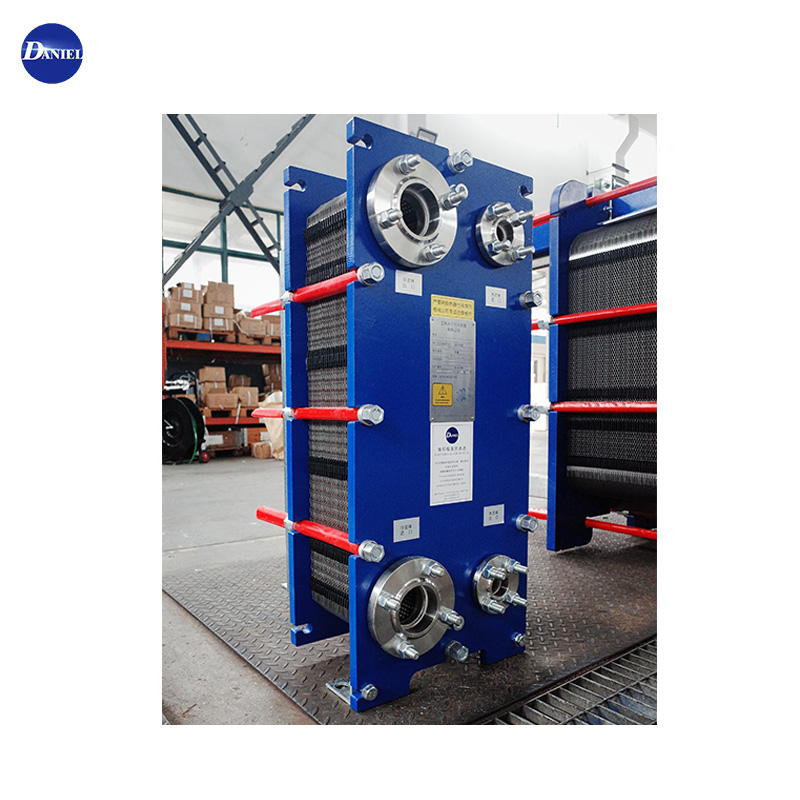Benefits and Maintenance Tips of Ship Engine Disassembly Plate Heat Exchanger
2024-06-20
A ship engine disassembly plate heat exchanger is a crucial component in the cooling system of marine engines. Here’s a comprehensive guide on its features, benefits, disassembly process, maintenance tips, and considerations:
Features
1. Plate Heat Exchanger Design:
- Consists of multiple thin, corrugated metal plates that create a series of channels for fluid flow.
- Plates are typically made of stainless steel or titanium for corrosion resistance and durability.
2. Gaskets:
- Rubber gaskets between the plates to seal the channels and direct fluid flow.
3. Frame:
- Sturdy frame to hold the plates together under pressure.
- Can be opened for disassembly and maintenance.
4. Inlet and Outlet Ports:
- Ports for the entry and exit of hot and cold fluids.
Benefits
1. Efficiency:
- High heat transfer efficiency due to the large surface area of the plates.
- Compact design saves space in the engine room.
2. Easy Maintenance:
- Plates can be removed and cleaned individually.
- Gaskets can be replaced without the need to replace the entire unit.
3. Versatility:
- Suitable for various fluids and temperatures.
- Can be customized for different engine sizes and requirements.
Disassembly Process
1. Preparation:
- Shut down the engine and allow it to cool.
- Isolate the heat exchanger from the system by closing the inlet and outlet valves.
- Drain the fluids from the heat exchanger.
2. Removing the Plates:
- Loosen and remove the bolts or clamps securing the frame.
- Carefully open the frame to access the plates.
- Remove the plates one by one, noting their order and orientation.
3. Inspecting and Cleaning:
- Inspect each plate for signs of wear, corrosion, or damage.
- Clean the plates using a suitable cleaning solution and a soft brush or cloth.
- Inspect and clean the gaskets, replacing any that are damaged or worn.
4. Reassembling:
- Reassemble the plates in the correct order and orientation.
- Ensure gaskets are properly seated and aligned.
- Secure the frame by tightening the bolts or clamps evenly to prevent leaks.
Maintenance Tips
1. Regular Inspection:
- Perform regular visual inspections of the heat exchanger for leaks, corrosion, or other signs of wear.
2. Cleaning:
- Clean the heat exchanger periodically to remove any buildup of deposits or fouling that can reduce efficiency.
3. Gasket Replacement:
- Replace gaskets at regular intervals or when signs of wear are detected to prevent leaks.
4. Monitoring:
- Monitor the performance of the heat exchanger, including temperature and pressure differentials, to detect any issues early.
Considerations
1. Material Compatibility:
- Ensure the materials of the plates and gaskets are compatible with the fluids being used in the system.
2. Operational Conditions:
- Consider the operational conditions, including temperature, pressure, and fluid flow rates, when selecting and maintaining the heat exchanger.
3. Professional Service:
- For complex issues or major overhauls, consider professional service to ensure proper maintenance and repairs.
Popular Brands
- Alfa Laval
- GEA
- SWEP
- Tranter
- Danfoss
These brands are known for their high-quality plate heat exchangers and reliable performance in marine applications.
Conclusion
Proper maintenance and regular inspection of a ship engine disassembly plate heat exchanger are essential for ensuring efficient cooling and overall engine performance. By following the correct disassembly and cleaning procedures, you can extend the lifespan of the heat exchanger and maintain optimal operation of your marine engine.



